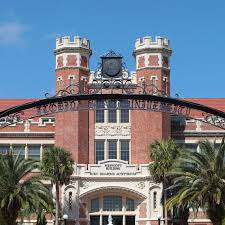Speaker
Description
One of the main goals of ultra-relativistic nuclear collisions is to create a new state of matter called quark-gluon plasma (QGP) and study its properties. Anisotropic flow $v_n$, defined as the correlation of the azimuthal angle of each particle with respect to a common symmetry plane $\Psi_n$, is an ideal probe of QGP's properties. The $v_n$ and $\Psi_n$ represent the magnitude and the phase of a complex flow vector $V_n$, respectively. Azimuthal anisotropies are traditionally measured using 2- and/or multi-particle correlations over a large range in $p_\mathrm{T}$ and $\eta$. However, hydrodynamic calculations show that the event-by-event fluctuations in the initial conditions and the dynamics during the system expansion lead to flow vector fluctuation in $p_\mathrm{T}$ and/or $\eta$ including flow angle and flow magnitude fluctuations.
In this talk, we present the investigations on the $p_{\rm T}$-dependent flow vector fluctuations in Pb--Pb collisions at $\sqrt{s_{\rm NN}}=5.02\,{\rm TeV}$ generated with A Multi-Phase Transport model (AMPT). New multi-particle correlators can separate the flow angle and magnitude fluctuations and can serve as a tool to study them separately in experiments. Additionally, the flow vector, angle and magnitude fluctuations can significantly improve the understanding of the initial conditions and the dynamic evolution of the created systems in heavy-ion collisions.
| speaker affiliation | Niels Bohr Institute, University of Copenhagen |
|---|

